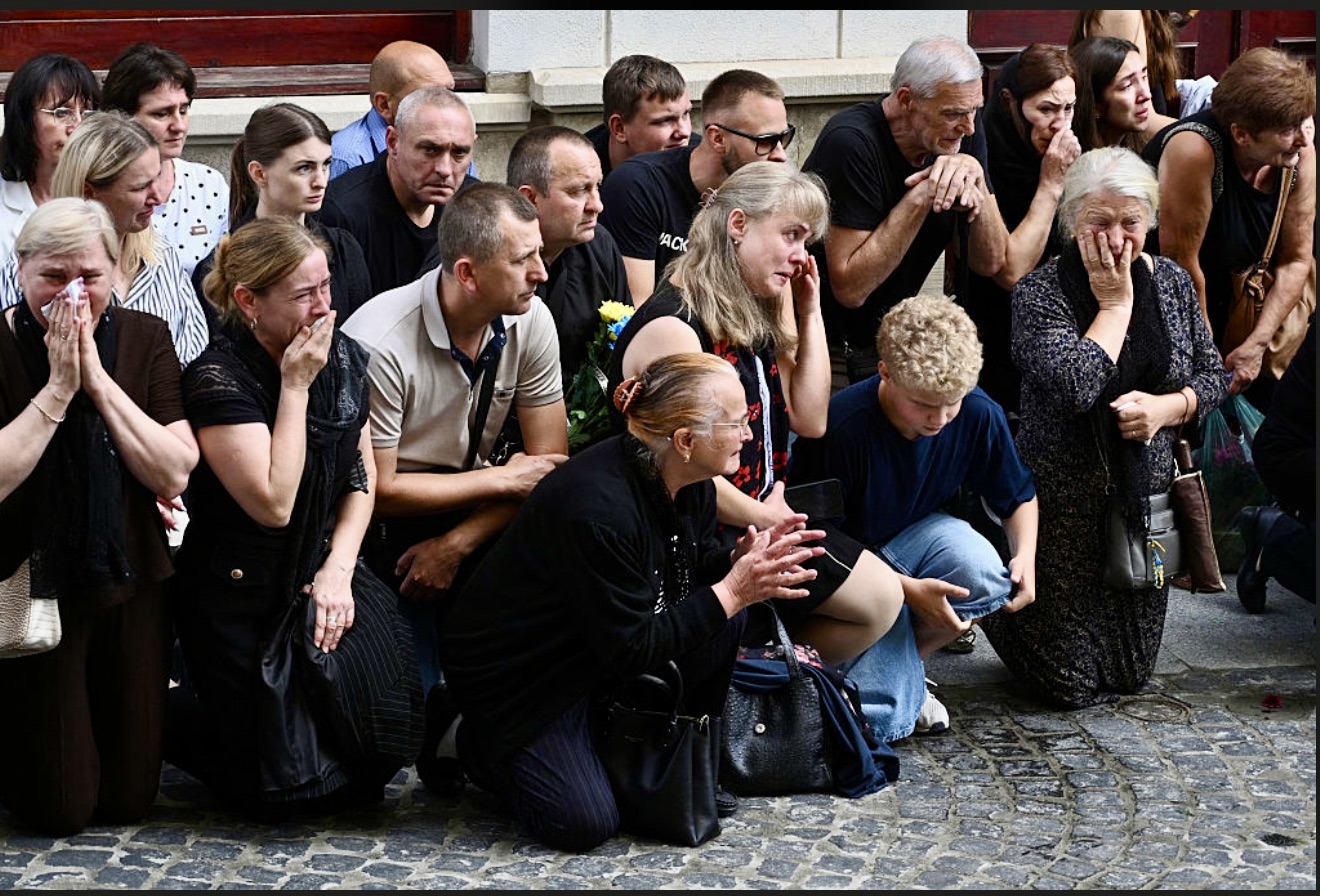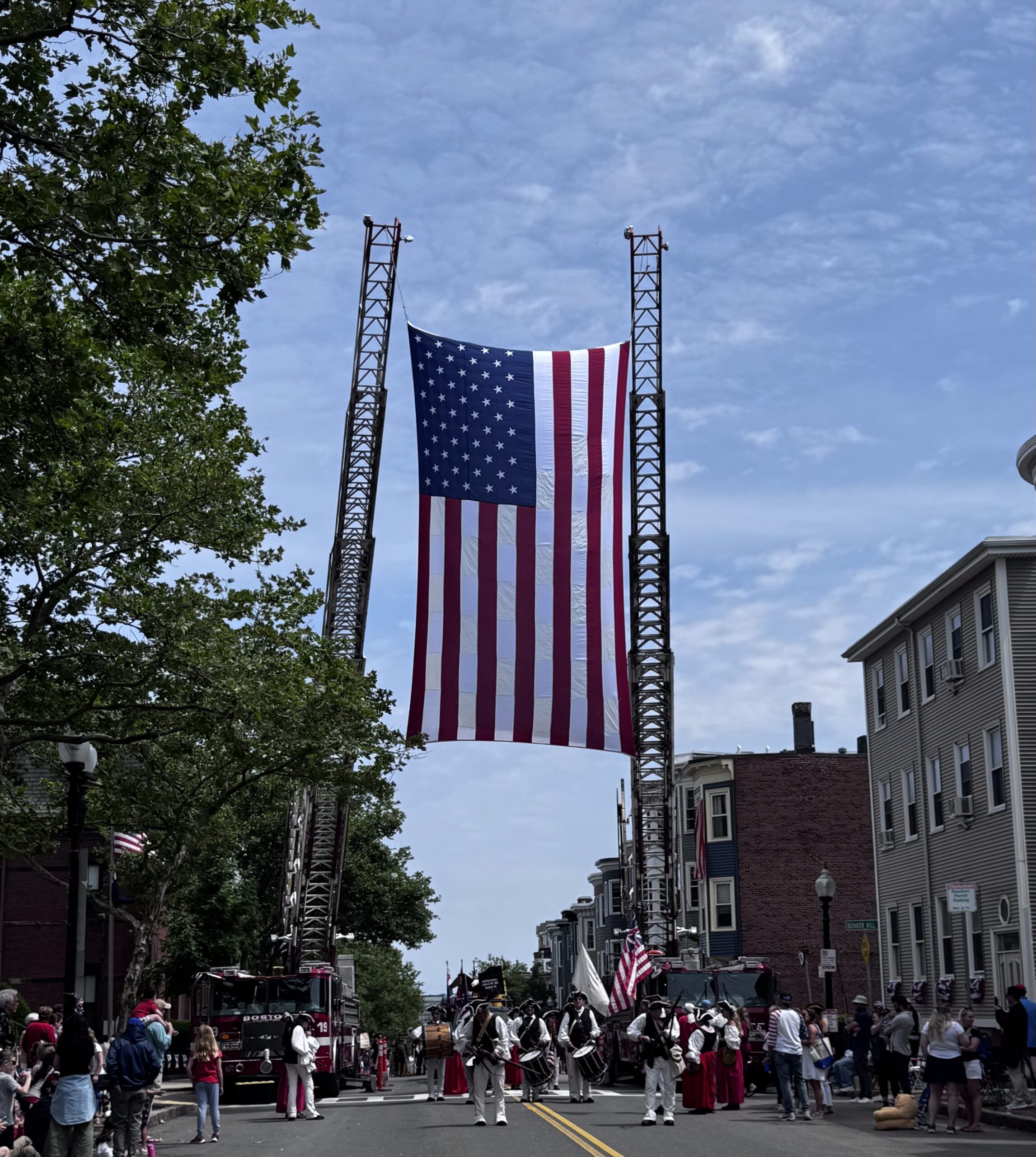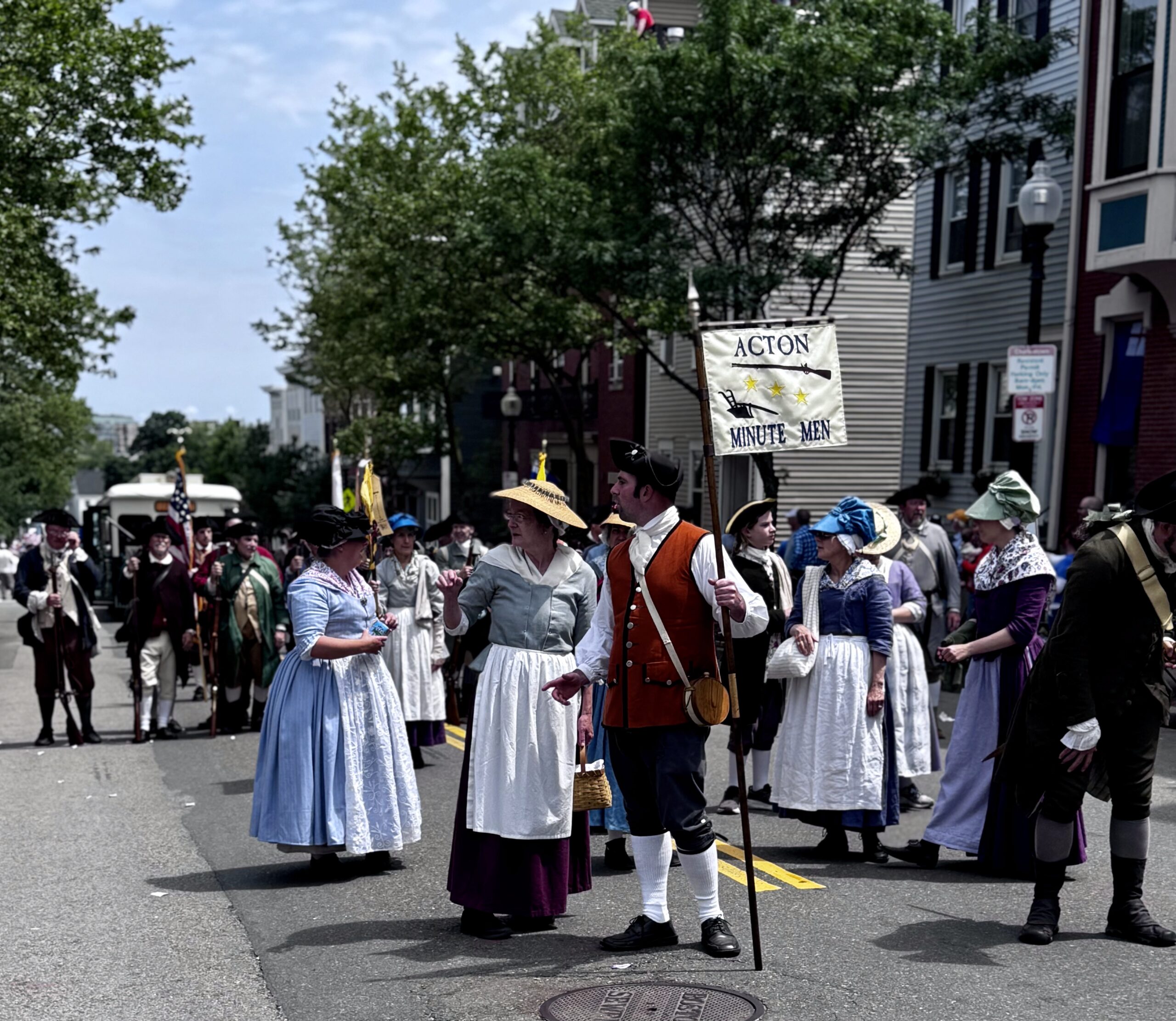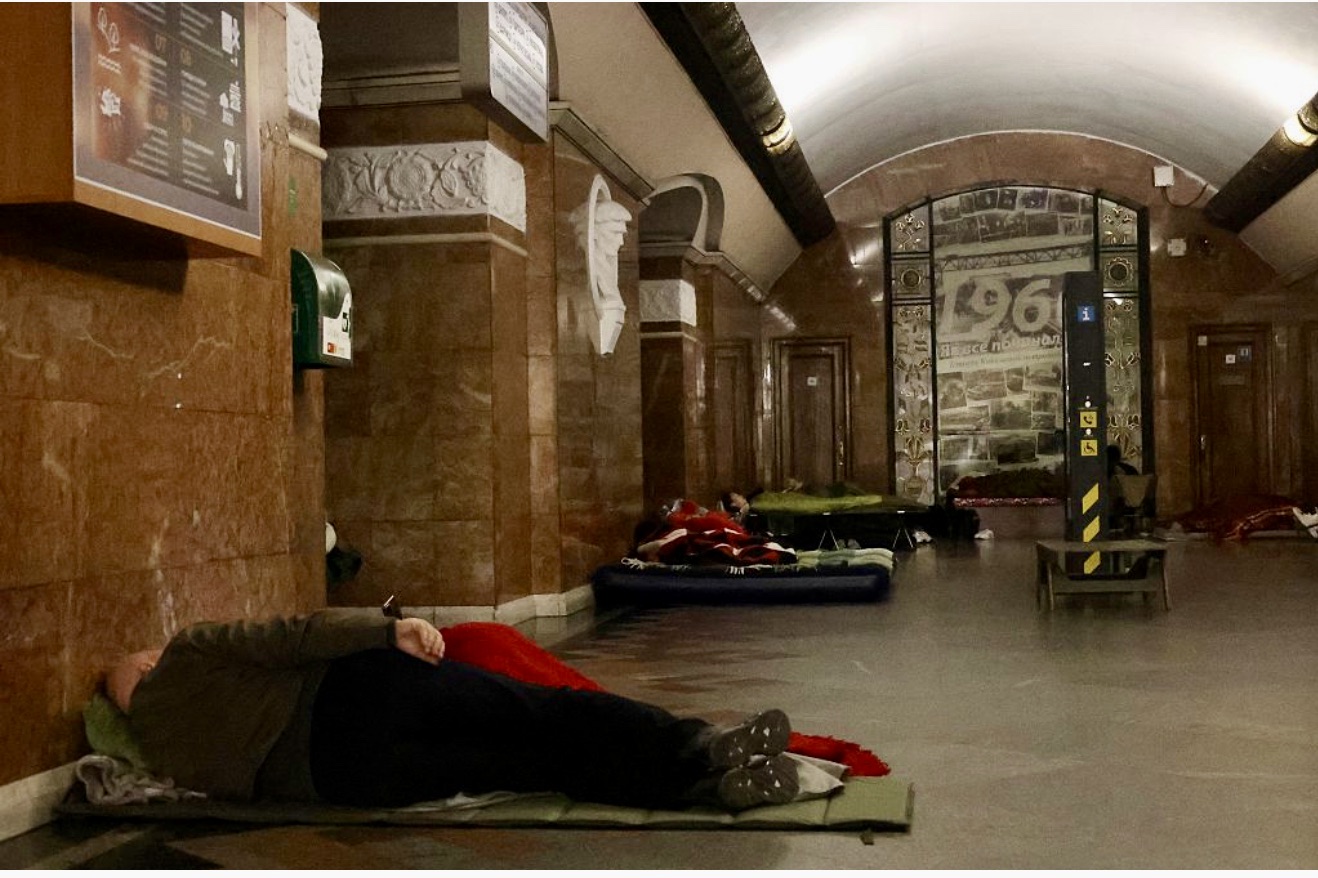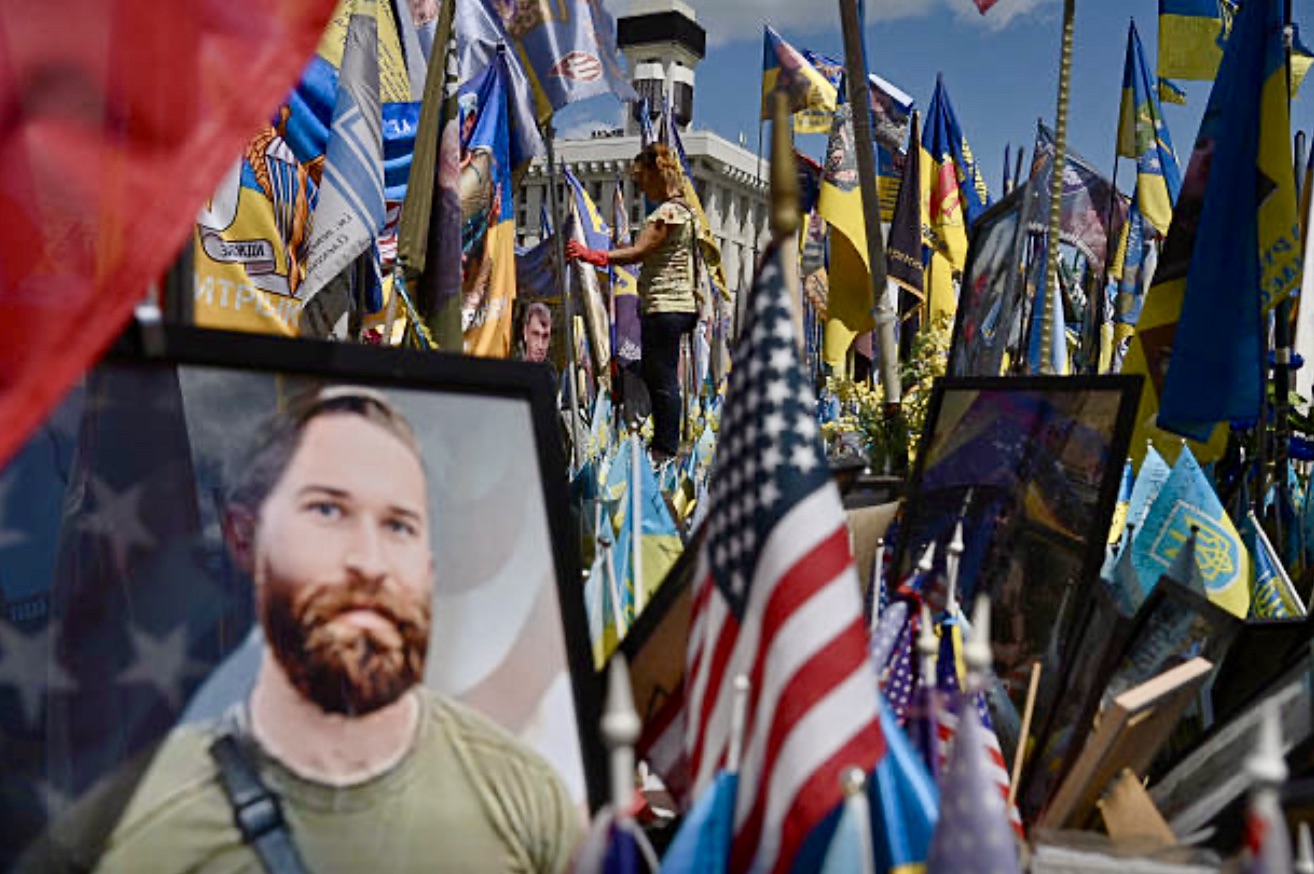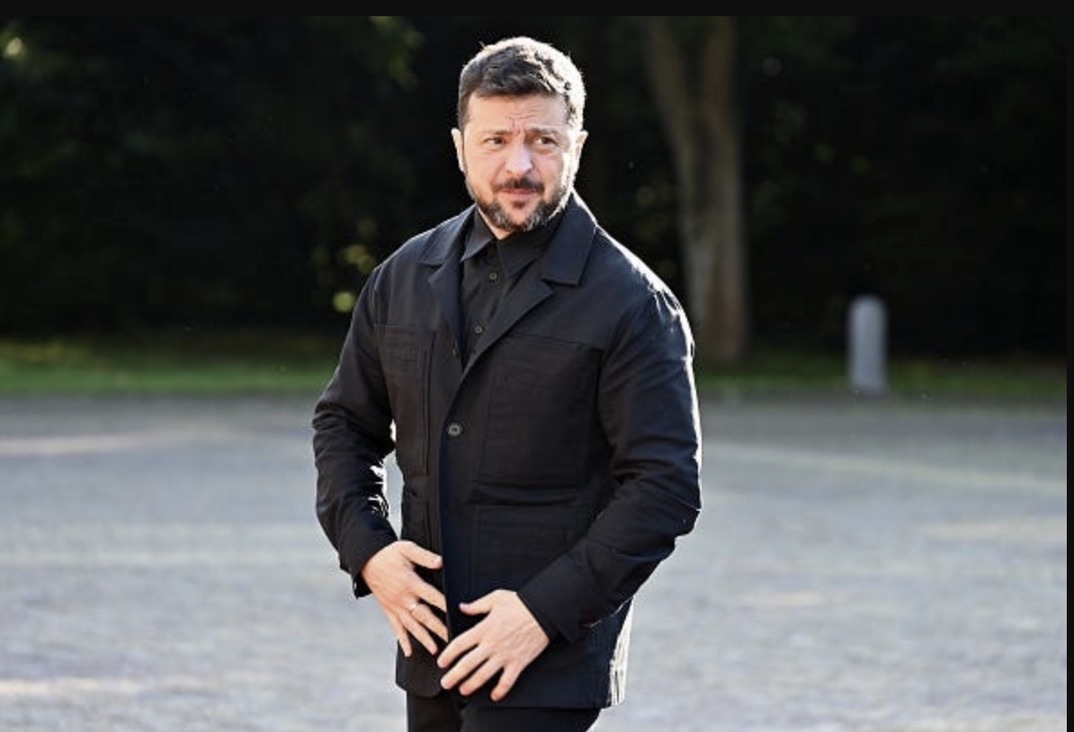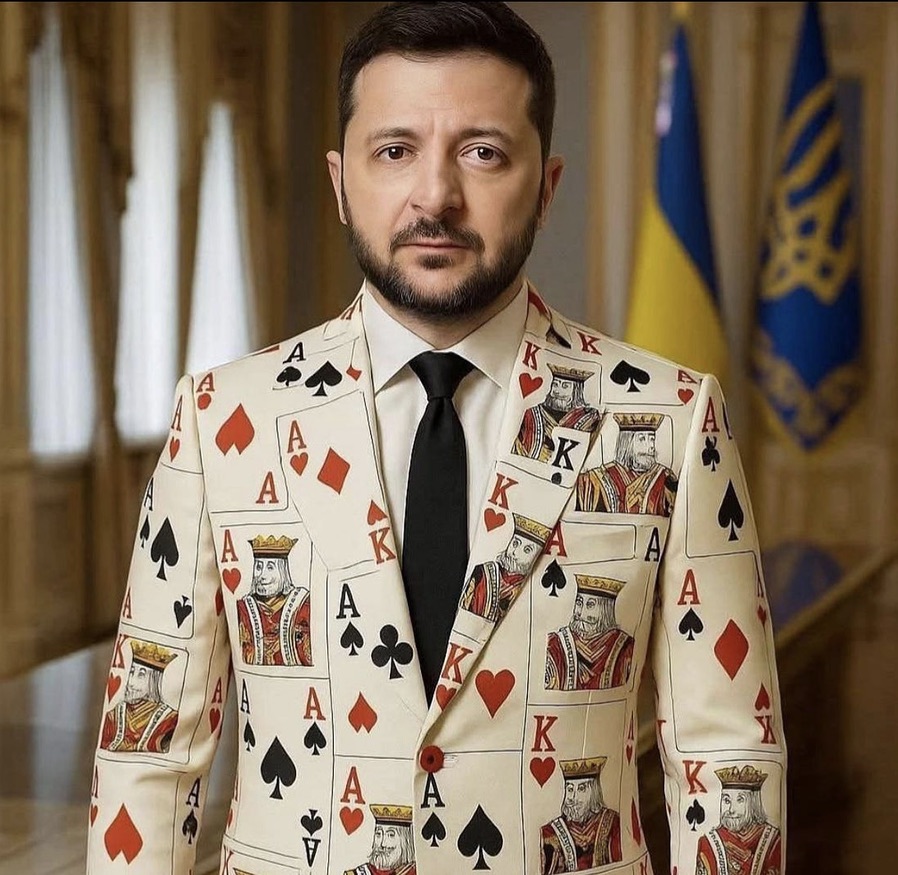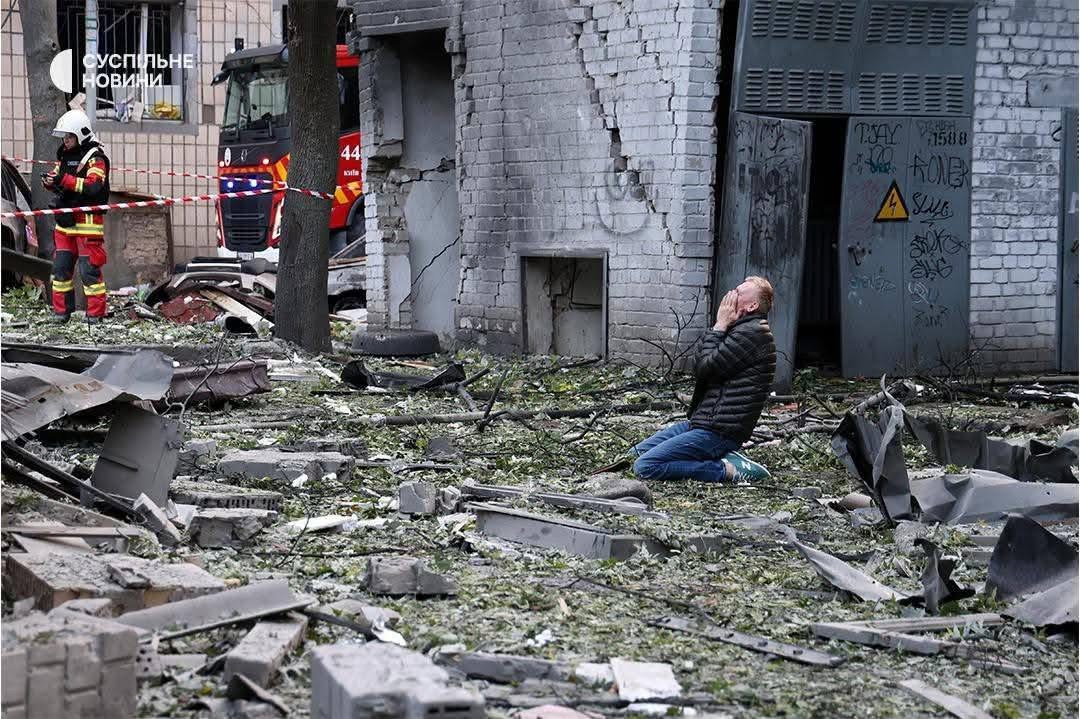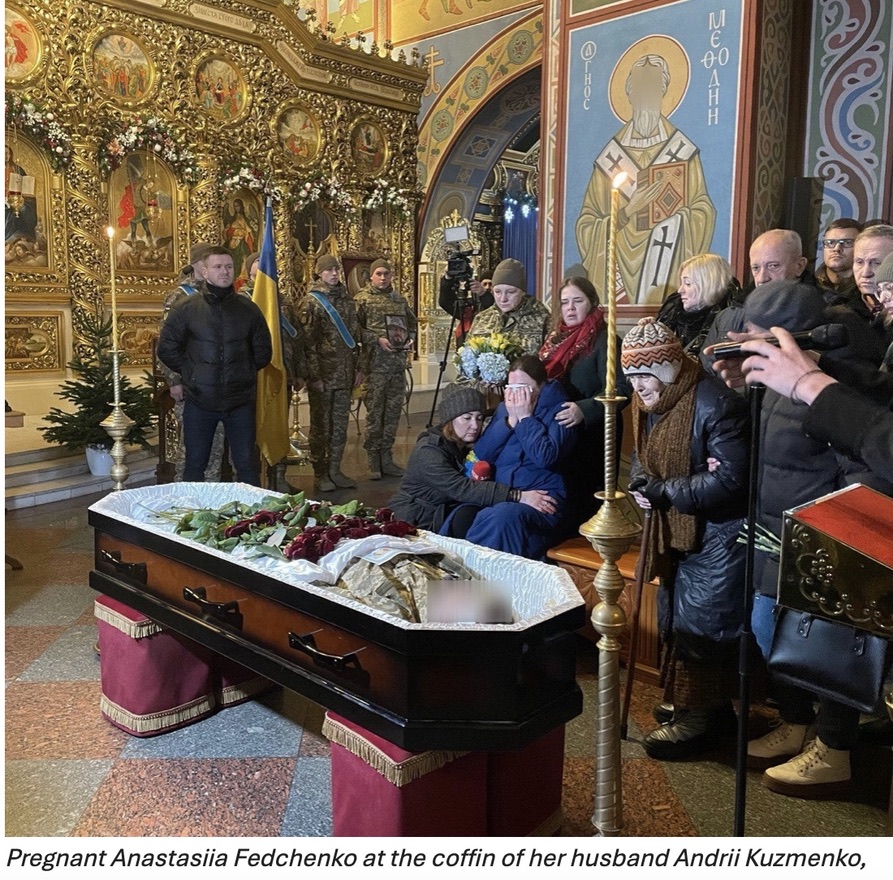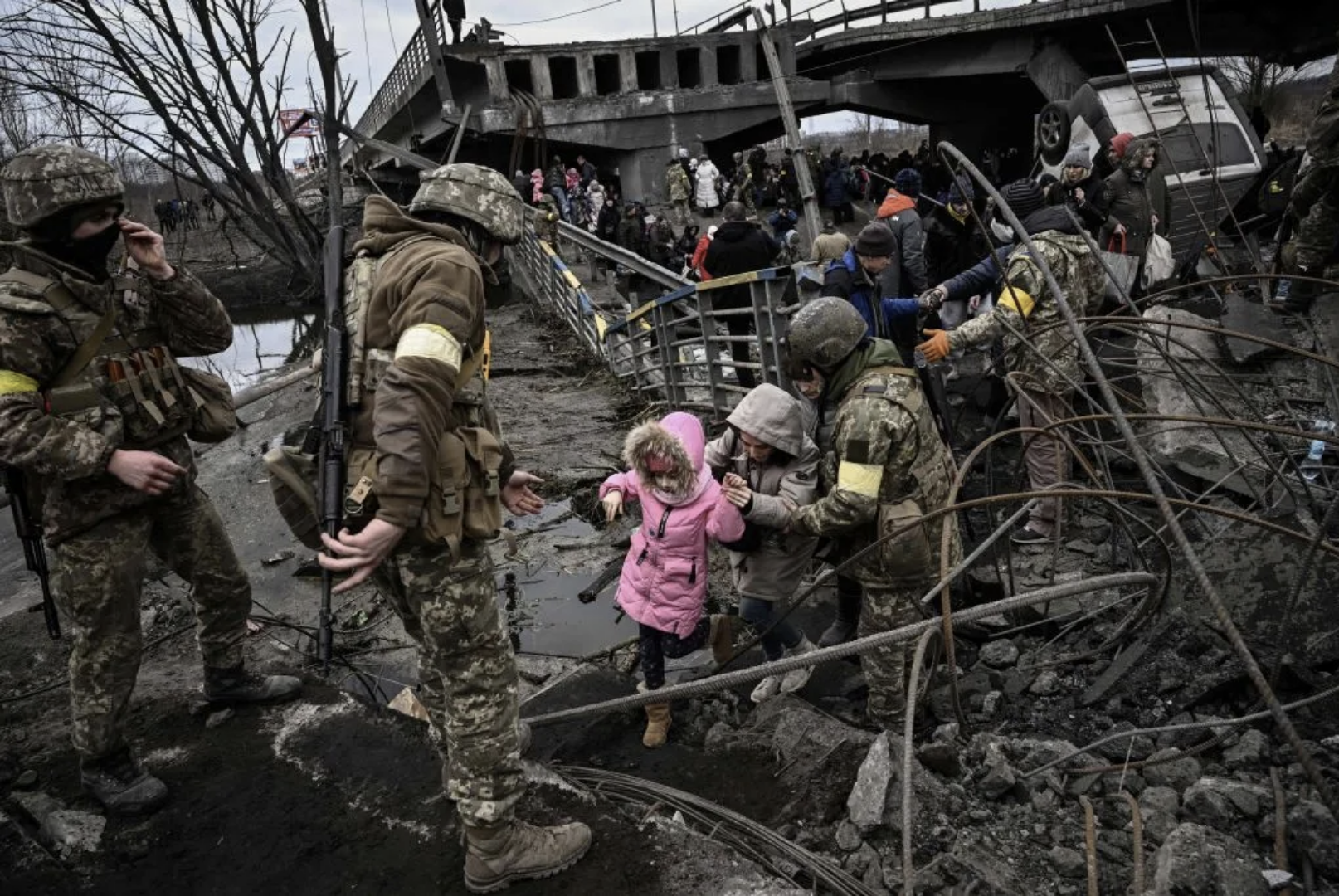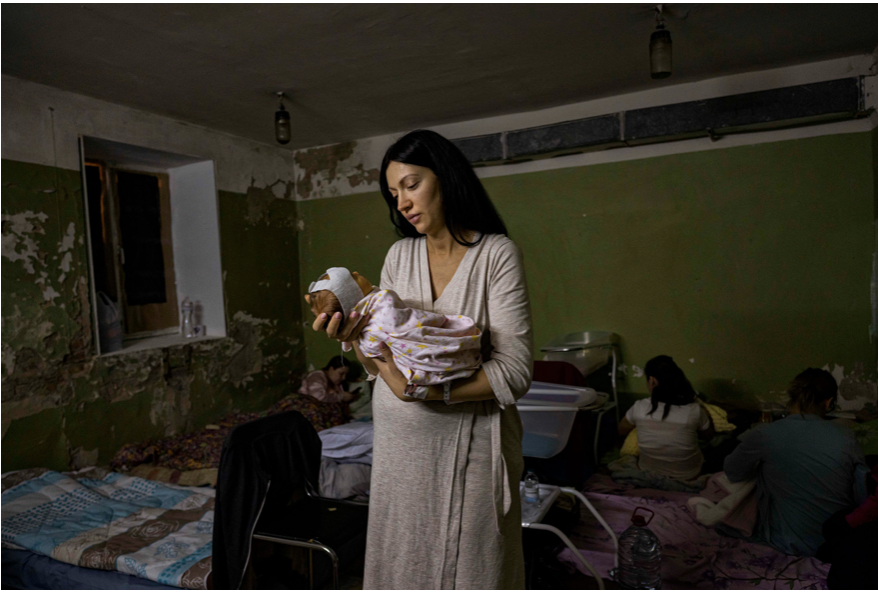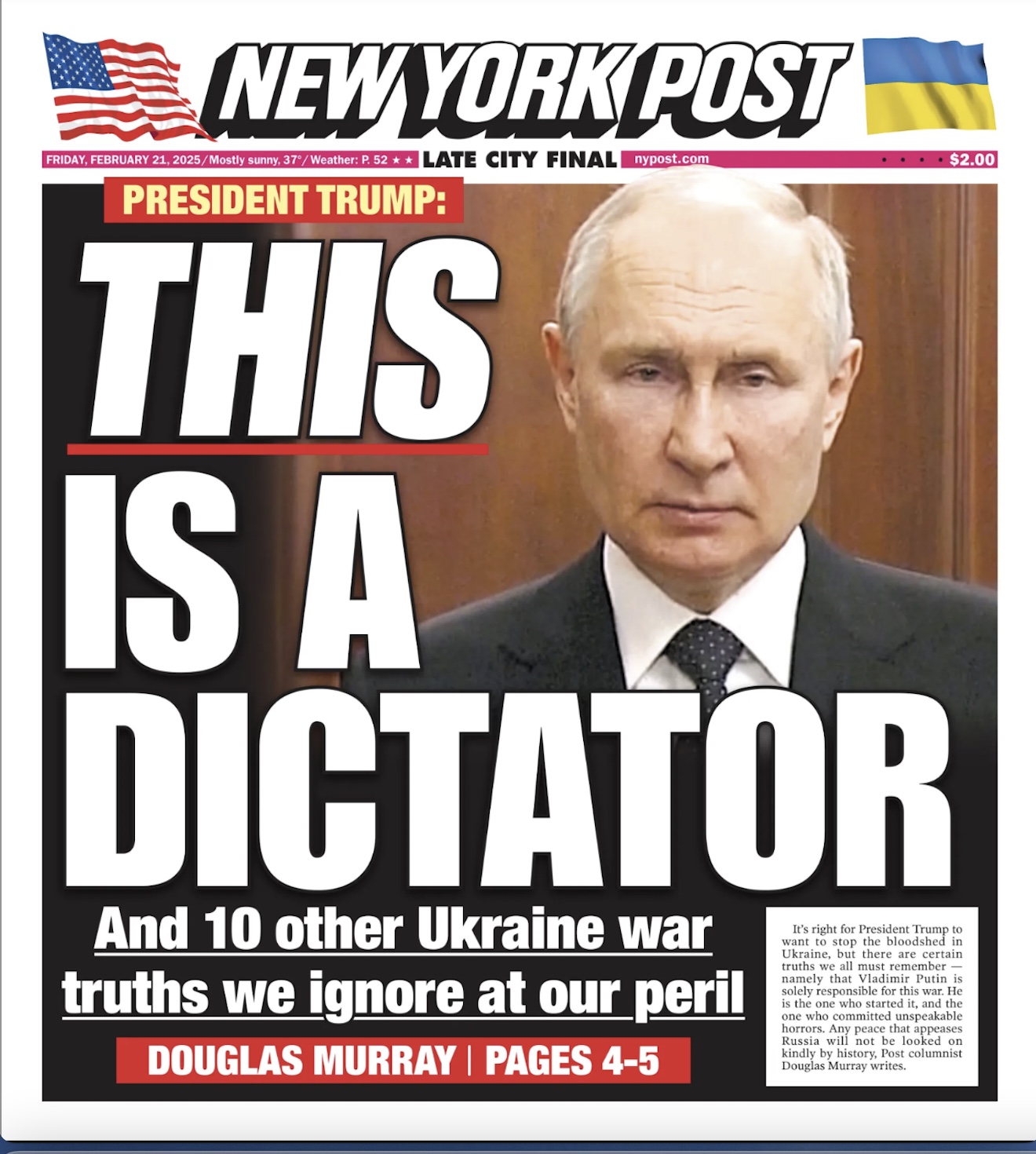Last Sunday evening Joan and I attended a fund raising dinner for Ukraine hosted by St. John’s Episcopal Norwood in Bethesda. The meal was prepared and served by the women of St. Andrew’s Ukrainian Orthodox church in Silver Spring.
Over 60 people attended with table centerpieces in yellow and blue bouquets and small Ukrainian flags.
These periodic events are led by two St. John members who formed a Ukrainian support group years earlier after Russia’s invasion. They share information on the country’s trials of war. They have raised funds for replacing a neo-natal unit in a children’s hospital, tourniquets for civilian casualties, microscopes for high school science classes as well as sending surplus Halloween candy to be delivered by Christmas.
As official US government support has waxed and waned, these people to people efforts have remained constant.
This evening’s focus was to raise money to help purchase an evacuation ambulance, especially equipped for rapid response of civilians and soldiers injured in war. The vehicle would be assigned to the Medical Unit, 12rh special forces Azov Brigade.
The Azov brigade became known for its stand during the months long siege at the Mariupol Azovstal steel plant in 2022, The evening’s theme:
“We cannot bring back the fallen. But we can honor theirmemory by saving and protecting the living.”
A New Lifeline via Community
To buy and equip an all-terrain ambulance in Ukraine would cost $14,000. Yesterday the St. John’s leader Sandie emailed the group that the entire amount had been raised with more for medical supplies.
This was the response from Olena who organized the women of St . Andrews, who brought the dinner, when she heard the outcome:
This is truly groundbreaking!
This vehicle will mean life; it will be equipped and is meant to go to the darkest and most hopeless places of war to bring back survivors. It will bring a mother back home, reunite a son with his parents, it will work hard to make sure families are reunited.
Having received so much feedback from Ukraine about someone’s last words over the radio knowing they would not be rescued and were going to die, we can honestly say this is a new lifeline for some. This will mean fewer cases of the last words to the loved ones over the radio.
We thank you, Ukraine thanks you, families and children thank you. We are the kind strangers that carry out this mission and once again we made this happen, as a community.
A Sunday evening meal shared with people committed to doing good for another country that many may never visit. It is a reminder that when giving, we often receive much ourselves.


